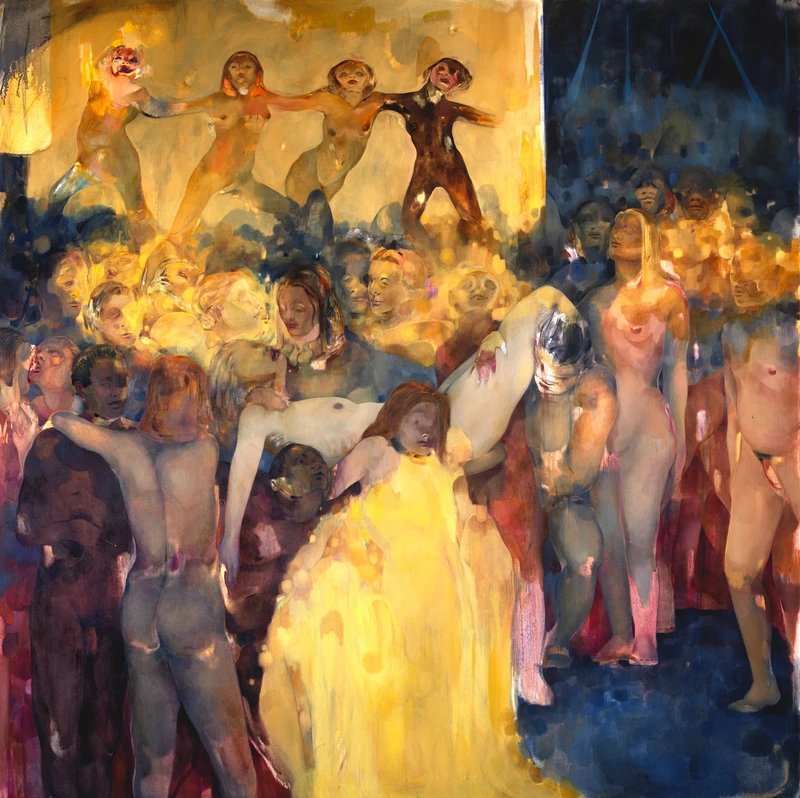Eva Helene Pade: Søgelys
14 Oct-22 Nov 2025


With my figurative painting, I create blurred lines or gaps that become the language for the things we can’t put into words. That’s what I envy so much about abstraction, it’s already working in a realm for which language does not exist. — Eva Helene Pade
Thaddaeus Ropac London presents Eva Helene Pade’s first solo exhibition in the UK. Following the Danish-born, Paris-based artist’s institutional debut at ARKEN Museum of Contemporary Art in Denmark earlier this year, Søgelys brings together a significant new group of paintings in which Pade continues to explore the violent and seductive forces that exist between bodies in space. Her monumental and small-scale canvases are suspended on floor-to-ceiling metal posts, set away from the walls to create dynamic spatial configurations. Much like choreography, ‘it forces people to move within them,’ she says, ‘but also to connect the paintings together. I create them together, like an ensemble; they talk together.’
Pade is drawn to the commotion of the ensemble – how, within a crowd, a single figure might begin to lose distinction, morph into another, or distort as it surges and contracts. In her paintings, casts of jewel-toned bodies gather in thrumming, indeterminate spaces that recall nightclubs or theatres. The female body is central to Pade’s practice, making up the majority of the figures in her crowd scenes. Departing from art-historical traditions, it is depicted not as an object of gaze or individual identity, but as a vehicle of collective expression and embodiment. ‘I approach figures more like a colour palette, vessels for emotions,’ she says. For Pade, the body forms part of a primal, instinctive language, like a brushstroke, a gesture or a dance. In her works, it becomes a volatile thing, as though oil paint is not only a medium with which to render flesh physically – a face, smudged lips, breasts and thighs – but the substance by which it might ultimately be dissolved.
Pade’s work draws on a tradition of history painting – its sweeping war scenes and portrayals of religious and mythological events – as well as the murals of Mexican painter Diego Rivera. In Den fundne (The found one), a woman salvaged from the crowd collapses into the Pietà pose, echoing one of art history’s most recognised iconographies. Elsewhere, such as Midt fald (Mid fall), Pade conjures ancient tales of metamorphosis – of Persephone, dragged into the depths of the underworld, Jupiter and Io, or Daphne as she flees Apollo, limbs contorting into the branches of a laurel tree. Intimating cycles of temptation and redemption, expulsion and resurrection, Pade casts her figures in states of suspension, where beginnings and ends become brinks and edges. She explains, ‘I want it to stay in the collapsing part all the time. I wanted to keep the tension.’ The smaller paintings in the exhibition become apertures in Pade’s storytelling, capturing glances, touches and other fleeting exchanges. Like the history painters who enlivened their scenes through complex configurations of poses, Pade, too, twists narratives into dance. And yet, her stories exist beyond place, time or subjectivity.